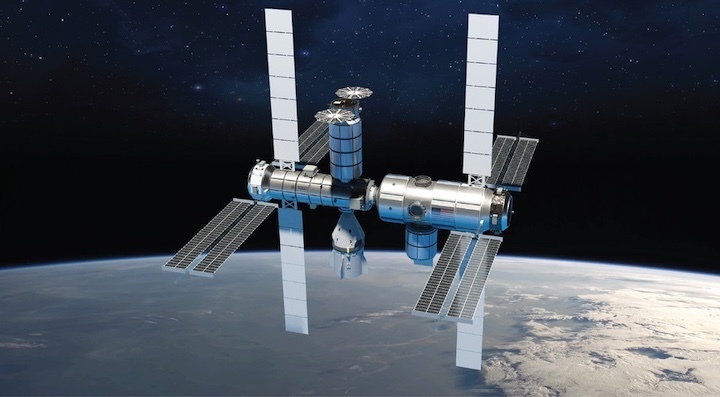8.02.2022

WASHINGTON — NASA expects that retiring the International Space Station in favor of leasing capacity on commercial space stations will ultimately save the agency up to $1.8 billion per year.
That estimate comes from an updated ISS transition report published by NASA last week. The report was submitted to Congress as an update to a 2018 report, required by a provision of a 2017 NASA authorization bill seeking information on the agency’s utilization of the ISS and how it will shift to future commercial stations.
NASA currently spends about $3.1 billion a year on the space station program, with more than $1.3 billion going to operations of the station and research performed there, and nearly $1.8 billion on crew and cargo transportation. A chart included in the transition report projected that spending to remain flat through fiscal year 2027.
Spending would then temporarily increase in fiscal year 2028 as NASA begins efforts to decommission the station. That decommissioning would include deorbiting the station in 2031 through the use of three Progress cargo spacecraft, or possibly Cygnus cargo spacecraft, to bring the station down over an uninhabited region of the South Pacific Ocean regularly used for deorbiting spacecraft.
Spending on both ISS operations and research, and on transportation to the station, would be gradually phased out from 2028 through 2031, as spending increases on purchases of commercial low Earth orbit destination services, using commercial stations whose development NASA is currently supporting through the Commercial LEO Destinations (CLD) program. The report estimates that NASA will spend about $1 billion a year on CLD services by 2033.
A few hundred million dollars of costs currently borne by the ISS program will be shifted to other parts of the agency, the report states. That is primarily mission control and related operations as well as civil servant labor.
The rest will be savings: $1.3 billion in 2031, increasing to $1.8 billion in 2033. “This amount can be applied to NASA’s deep space exploration initiatives, allowing the Agency to explore further and faster into deep space. This amount can also be applied to other NASA programs,” the report states.
Phil McAlister, director of commercial spaceflight at NASA Headquarters, offered a similar estimate at a meeting of the NASA Advisory Council’s Human Exploration and Operations Committee Jan. 19. “We anticipate, once we do the retirement, we’re going to save the agency about $1.5 billion” per year, he said. “That is going to be a key enabler for our Artemis missions going forward.”
Committee members raised questions about that estimate, noting the high costs of space transportation. “That is primarily going to be dependent on what the prices are, and we don’t know what the prices are yet. I don’t think even the providers really know,” McAlister acknowledged. Part of the work that the three teams, led by Blue Origin, Nanoracks and Northrop Grumman, selected by NASA in December for CLD awards will be to improve the fidelity of their estimated prices.
He added that NASA’s Office of the Chief Financial Officer performaned an independent estimate of cost savings from the transition to commercial space stations and came up with a similar number.
Part of the estimated cost savings comes from the expectation that NASA will be one of several customers for commercial space stations. “If we are just one of many customers, the providers will be able to amortize their fixed cost over a bigger base,” he said. “We will see cost savings just from that alone.”
McAlister added, though, that even if NASA is the largest or sole customer of a commercial station, the agency should still see some savings compared to the ISS. “Initially, they’re going to be much smaller than the ISS,” he said of commercial stations, and thus cheaper to operate. In addition, NASA’s requirements for those stations — hosting at least two astronauts and performing 200 investigations a year — will be less demanding than the ISS, and with less demand for crew and cargo transportation.
“For those reasons, you’re going to see a significant decrease” in costs, he concluded.
Quelle: SN
